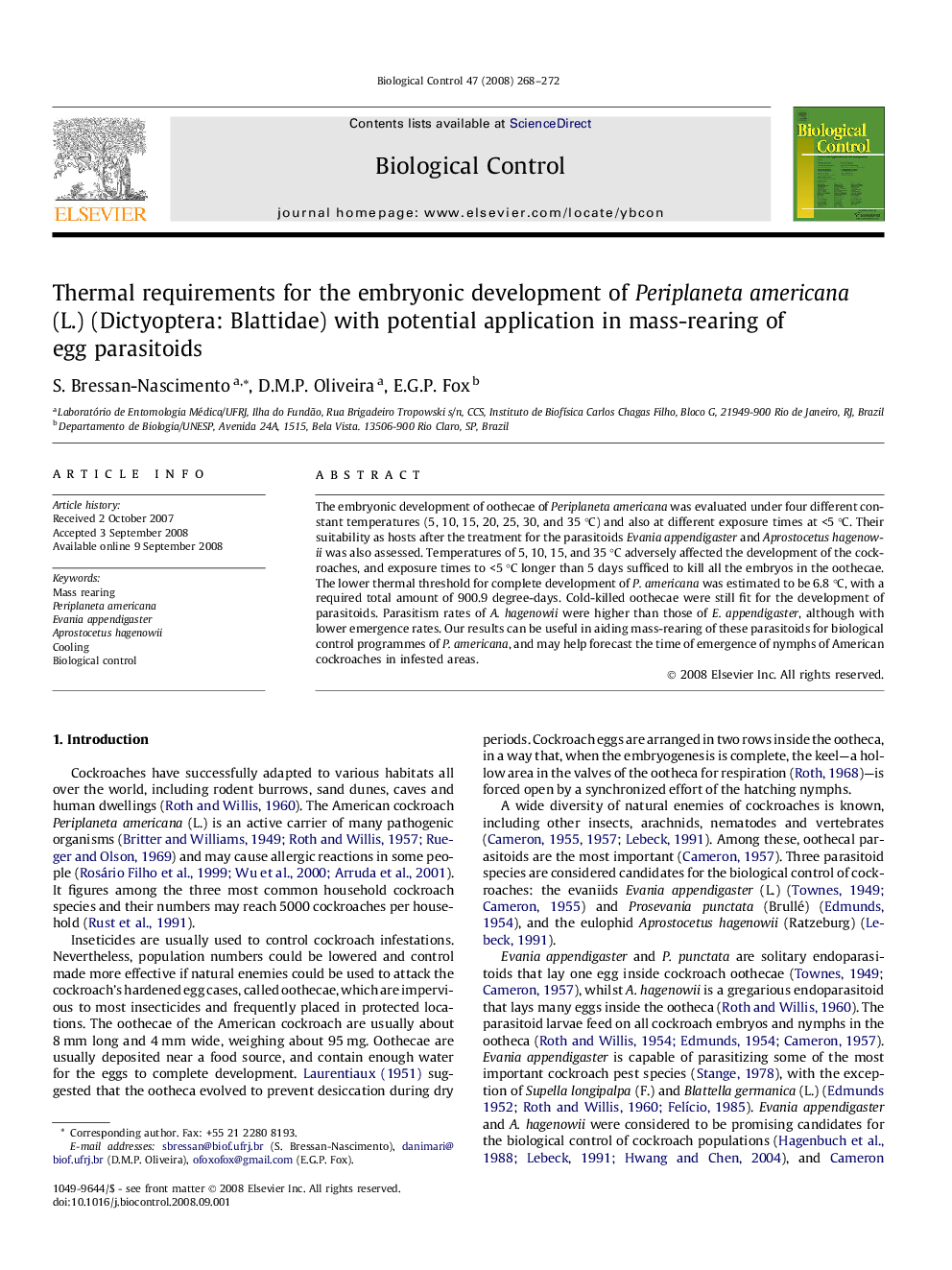| Article ID | Journal | Published Year | Pages | File Type |
|---|---|---|---|---|
| 4504785 | Biological Control | 2008 | 5 Pages |
The embryonic development of oothecae of Periplaneta americana was evaluated under four different constant temperatures (5, 10, 15, 20, 25, 30, and 35 °C) and also at different exposure times at <5 °C. Their suitability as hosts after the treatment for the parasitoids Evania appendigaster and Aprostocetus hagenowii was also assessed. Temperatures of 5, 10, 15, and 35 °C adversely affected the development of the cockroaches, and exposure times to <5 °C longer than 5 days sufficed to kill all the embryos in the oothecae. The lower thermal threshold for complete development of P. americana was estimated to be 6.8 °C, with a required total amount of 900.9 degree-days. Cold-killed oothecae were still fit for the development of parasitoids. Parasitism rates of A. hagenowii were higher than those of E. appendigaster, although with lower emergence rates. Our results can be useful in aiding mass-rearing of these parasitoids for biological control programmes of P. americana, and may help forecast the time of emergence of nymphs of American cockroaches in infested areas.
